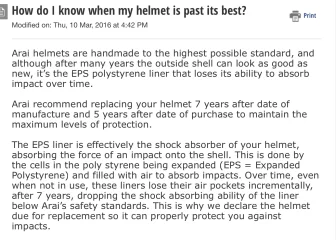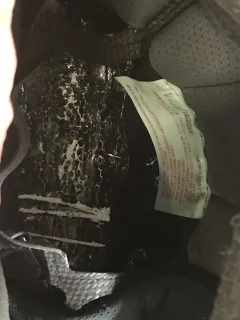Stephen_Spencer
VIP MEMBER
- Joined
- May 31, 2017
- Messages
- 3,175
This article is dubious at best in my opinion. The guy relies on pretty spurious interpretations of standards and articles (one relating to pushbike helmets) to claim that EPS liners do not degrade with age/contaminants etc. Nowhere near enough information researched to make claims like that.This is a good read. It points more towards normal (not CF) shell materials being the culprit with modern helmets. That and impact damage.

Do Motorcycle Helmets Expire? - Heads Don't Bounce
Learn about the expiry date of your old motorcycle helmet. Ensure your motorcycle helmet safety and head protection by knowing when to replace your safety gear.www.headsdontbounce.com
That being said, I used to buy/export used bikes. Hundreds. I would get tons of used helmets. A LOT of old helmets with non-replaceable liners/straps were literally falling apart.
EPS foam does degrade over time and use via ageing, physical use, sweat and various contaminants. I have seen it. But it is the degradation that may not be visible that is more concerning - an older helmet may save your skull from impact but maybe not your brain on that same impact, if the EPS foam has hardened or degraded in any way.
Other dubious claims like replacing chin straps rather than a helmet when the strap fails, seem to indicate that he hasn’t spent much time around motorcycles. Wouldn’t be making a decision about the life of a helmet based on this article.


12 month old Arai XD4 EPS liner:

7 year old Arai XD4 EPS liner
Both shells are immaculate.
